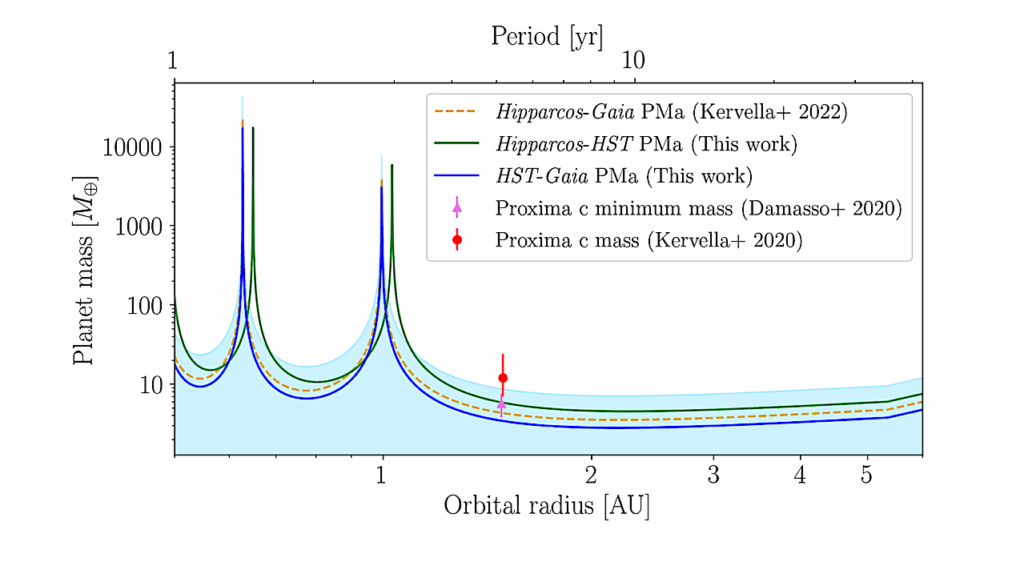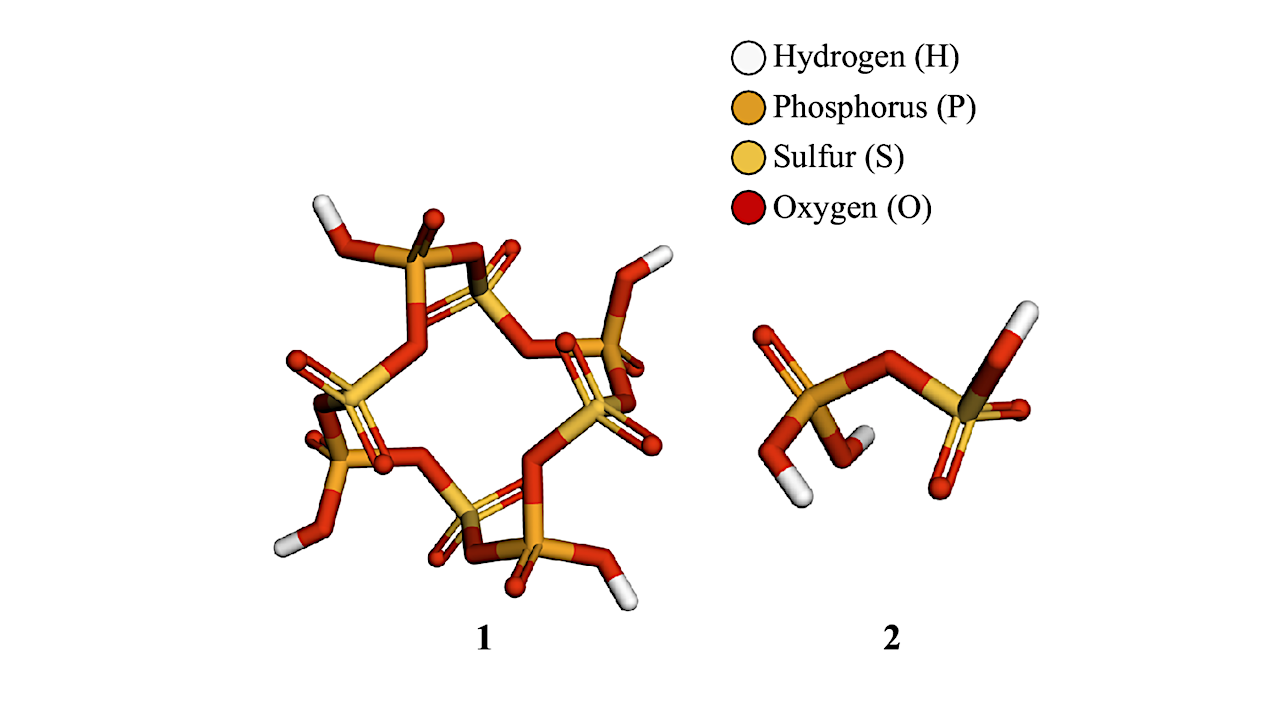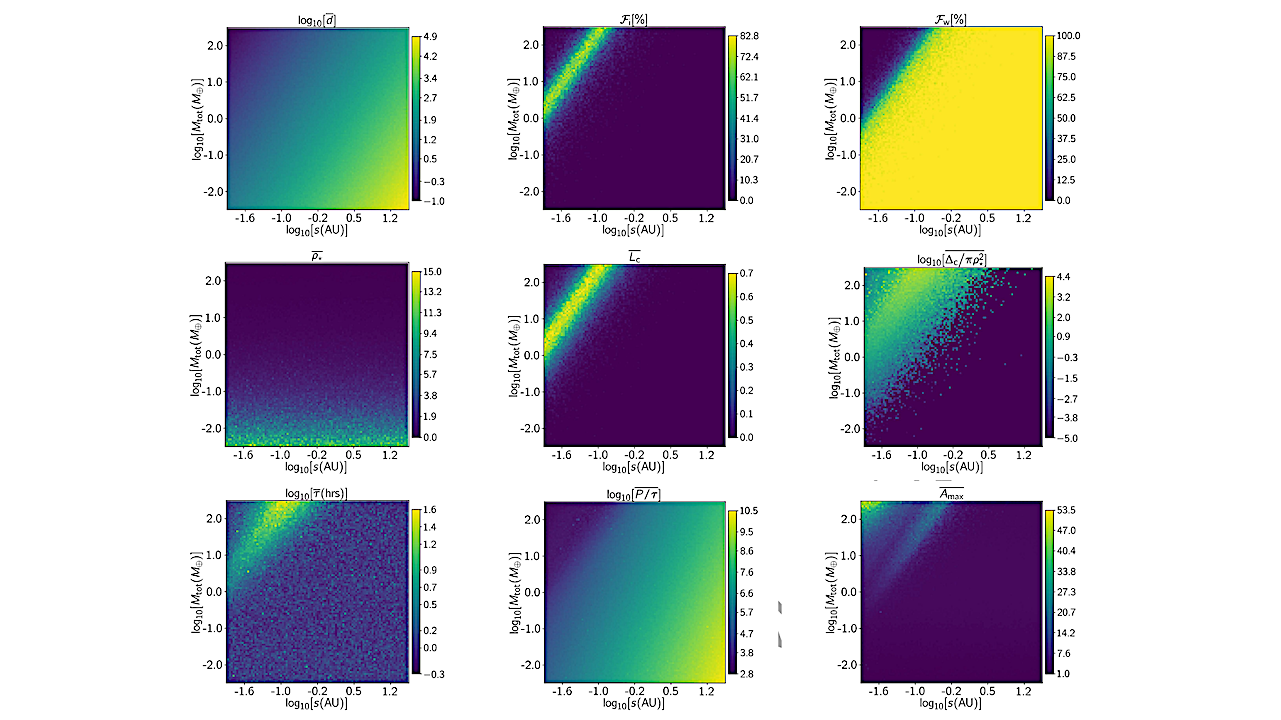Now Reading: From Underground Oceans To Continents: A Glimpse Into The Water Inventory On Rocky Planets Using Host Star Abundances
-
01
From Underground Oceans To Continents: A Glimpse Into The Water Inventory On Rocky Planets Using Host Star Abundances
From Underground Oceans To Continents: A Glimpse Into The Water Inventory On Rocky Planets Using Host Star Abundances
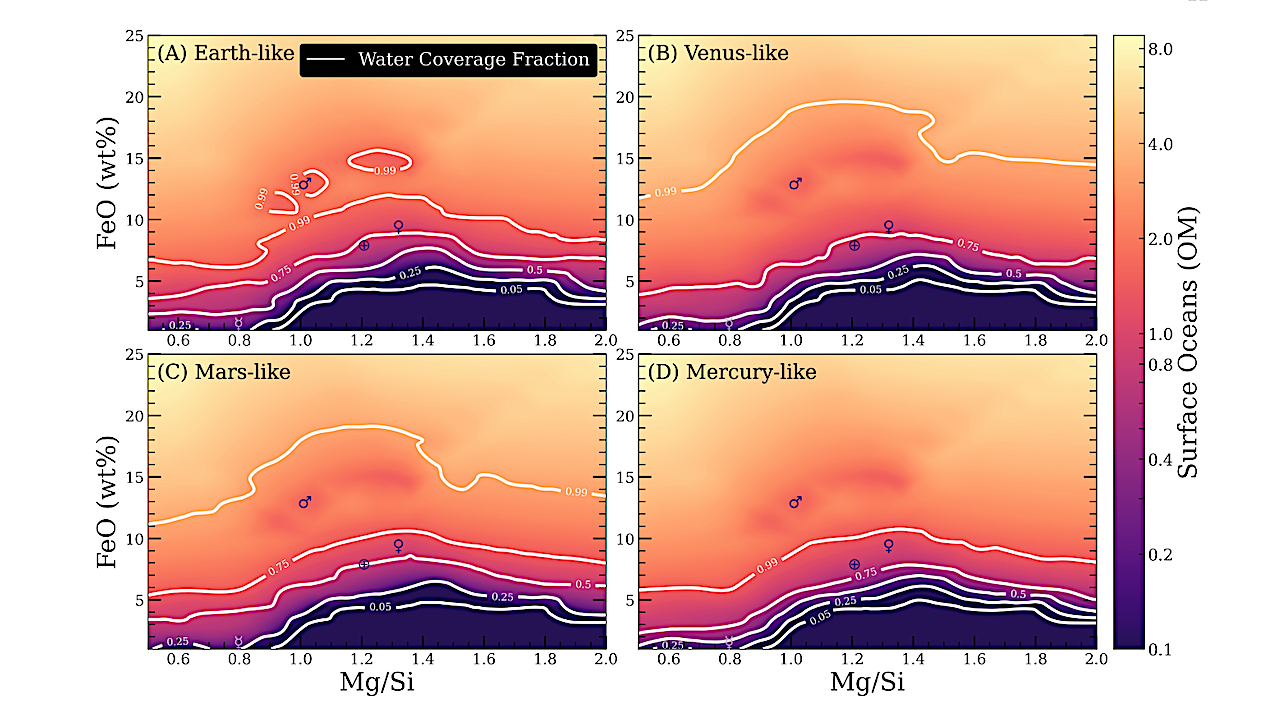
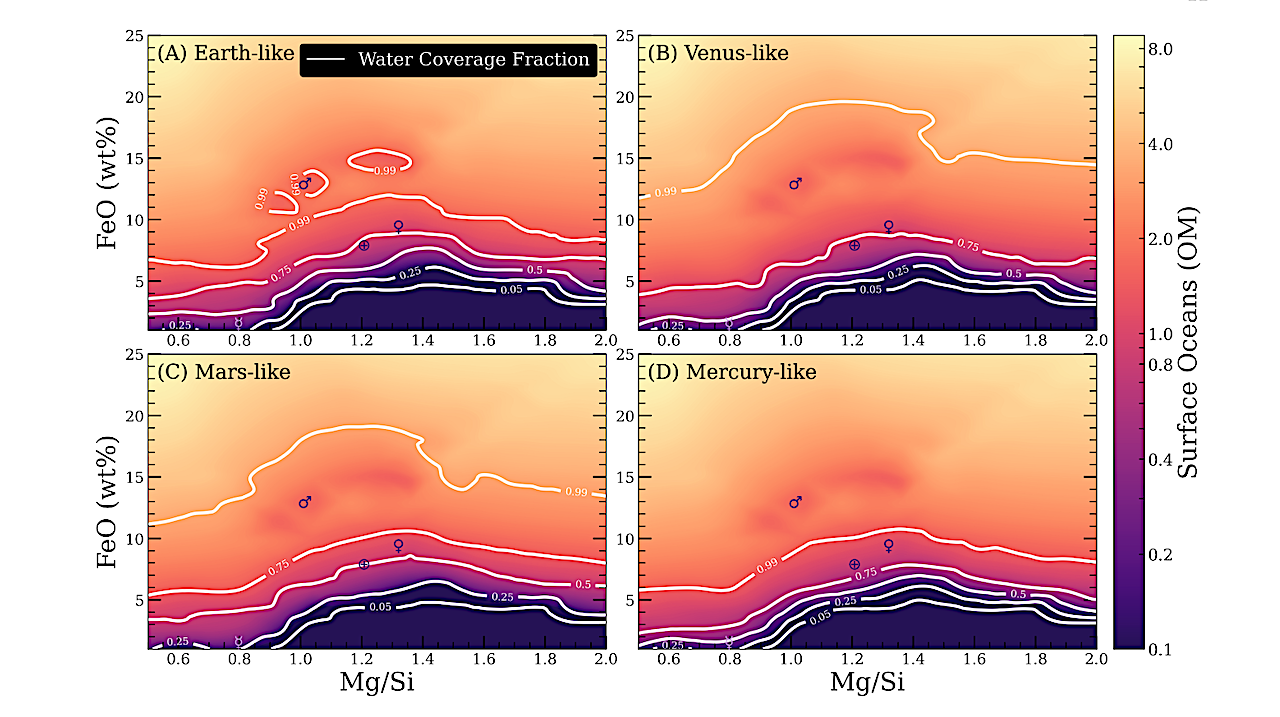
We show the total surface flooding for a given topography as a function of Mg/Si and FeO for a 1 M⊕ planet with Earth-like molar ratios (i.e., Fe/Mg, Ca/Mg, Al/Mg). We use cubic interpolation between data points for smoothing. The colorbar indicates the surface flooding in Earth oceans. We show the compositions of solar system planets with the following notation: Earth (⊕), Venus (♀), Mars (♂), Mercury (‘), using compositional values from R. G. Trønnes et al. (2019). (A) Earth-like topography shows three distinct ”islands” correspond to the increase in water storage capacity. (B) Venus-like and (C) Mars-like topographies show similar structure in the water coverage fraction. (D) Mercury-like topography reaches complete flooding at low OM. — astro-ph.EP
The amount of surface water is thought to be critical for a planet’s climate stability and thus habitability.
However, the probability that a rocky planet may exhibit surface water at any point its evolution is dependent on multiple factors, such as the initial water mass, geochemical evolution, and interior composition.
To date, studies have examined the influence of interior composition on the water inventory of the planet or how surface oceans may be impacted by planet topography individually.
Here, we provide the first exploration on the impact of interior composition, topography, and planet radius on the water inventory of rocky planets using a sample of 689 rocky planets with spectroscopically derived stellar abundances from APOGEE and GALAH. We find that the oxidation state of the mantle (FeO content) significantly impacts the mantle water storage capacity and potential for surface flooding.
For an FeO ~11 wt%, the water storage capacity of a 1 M⊕ is 2 times that of Earth, indicating that the oxidation state may reduce the amount of surface water. We quantify the impact of topography on seafloor pressures, showing that flat topographies are more likely to be flooded for all planet compositions and radii.
We also find that Mars-like topographies are more likely to have seafloor pressures that may form high-pressure ice, reducing seafloor weathering. Thus, for the first time, we show that the composition and topography of the mantle influence the water inventory of rocky planets.
Kiersten M. Boley, Wendy R. Panero, Francesca Miozzi, Ashika Capirala, Johanna K. Teske
Comments: Accepted to ApJ, 17 pages, 8 Figures
Subjects: Earth and Planetary Astrophysics (astro-ph.EP); Solar and Stellar Astrophysics (astro-ph.SR)
Cite as: arXiv:2510.24854 [astro-ph.EP] (or arXiv:2510.24854v1 [astro-ph.EP] for this version)
https://doi.org/10.48550/arXiv.2510.24854
Focus to learn more
Submission history
From: Kiersten Boley
[v1] Tue, 28 Oct 2025 18:01:48 UTC (7,327 KB)
https://arxiv.org/abs/2510.24854
Astrobiology,
Stay Informed With the Latest & Most Important News
-
 012024 in Review: Highlights from NASA in Silicon Valley
012024 in Review: Highlights from NASA in Silicon Valley -
 02Panasonic Leica Summilux DG 15mm f/1.7 ASPH review
02Panasonic Leica Summilux DG 15mm f/1.7 ASPH review -
 03From Polymerization-Enabled Folding and Assembly to Chemical Evolution: Key Processes for Emergence of Functional Polymers in the Origin of Life
03From Polymerization-Enabled Folding and Assembly to Chemical Evolution: Key Processes for Emergence of Functional Polymers in the Origin of Life -
 04How New NASA, India Earth Satellite NISAR Will See Earth
04How New NASA, India Earth Satellite NISAR Will See Earth -
 05And Thus Begins A New Year For Life On Earth
05And Thus Begins A New Year For Life On Earth -
 06Astronomy Activation Ambassadors: A New Era
06Astronomy Activation Ambassadors: A New Era -
07SpaceX launch surge helps set new global launch record in 2024













